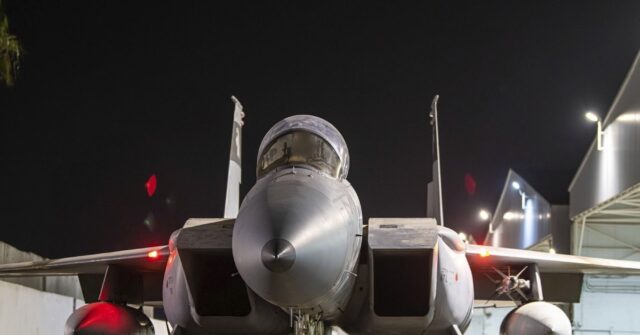On Thursday, Israel Army Radio reported that the Israeli Defense Forces (IDF) have been formulating plans for a potential strike on Iran’s nuclear facilities following their successful military operations in Syria, where they reportedly incapacitated approximately 90% of the country’s air defense systems. The IDF’s military correspondent, Doron Kadosh, highlighted that the Israeli forces dismantled around 86% of Syria’s surface-to-air missile capabilities among other strategic targets within just a few days after the fall of the Assad regime. According to Kadosh, the IDF utilized 1,800 munitions in their campaign, shifting their focus from prior missions to the Syrian military once the Assad regime began to collapse.
Kadosh provided additional context, indicating that the operational plans to neutralize the Syrian military were finalized only hours before the regime’s downfall, underscoring the rapid and decisive nature of Israel’s military strategy. With a significantly weakened Syrian defense, the Israeli military is now observing a “clear axis to Iran,” which could lead to further strikes on Iranian nuclear facilities. This assessment places the onus of making any final decisions regarding such actions on elected political leaders, presenting a scenario in which the military is poised for decisive action should direction be given.
The IDF released a statement affirming the levels of destruction inflicted on Syria’s military capabilities. The intelligence gathering conducted in the preceding weeks led to a proactive strategy aligning with the anticipation of the Assad regime’s collapse. The IDF confidently reported that extensive air strikes had notably crippled Syria’s advanced military assets, ranging from fighter jets and helicopters to precision-guided missiles and extensive aerial defense systems. The damage inflicted on Syria’s robust aerial defense network, recognized as one of the strongest in the Middle East, marks a significant achievement for Israel’s air superiority.
Significantly, among the networks targeted were key Syrian Air Force bases, including T4 Airport and Ble Airport, leading to the obliteration of operational squadrons. Additionally, truckloads of arms and munitions, including surface-to-surface missiles, were destroyed as part of an extensive effort against Syria’s military infrastructure. The attacks on manufacturing and storage facilities, especially those linked to Syria’s Scud missile project, underscore Israel’s commitment to nullifying any threats posed by the Syrian military alignment with Iran.
The ongoing situation is further complicated by Iran’s persistent nuclear ambitions, which have intensified particularly since the Biden administration took office. This has led to heightened concerns about Iran’s potential to emerge as a nuclear power, particularly after the U.S. withdrawal from the 2015 nuclear agreement during the previous administration. The long-standing Israeli and U.S. consensus has been that military strikes against Iran’s nuclear endeavors would only be considered a last resort, though U.S. officials have cautioned Israel against immediate military action.
Israel’s strategic calculus has shifted, however, with recent successful military operations leading to reduced deterrents from Iranian-backed Hezbollah in Lebanon. Israel appears emboldened, having conducted operations against Iranian facilities—besides military assessments suggesting urgent action. As the geopolitical landscape transforms with the incoming Trump administration possibly signaling a shift in U.S. support for military action against Iran, Israel may feel increasingly inclined to act independently, prioritizing its security interests over formal dialogue with Washington. This evolving context elevates tensions surrounding Israel’s military stance and its readiness to respond to perceived threats from Iran.

